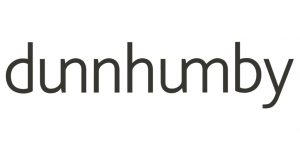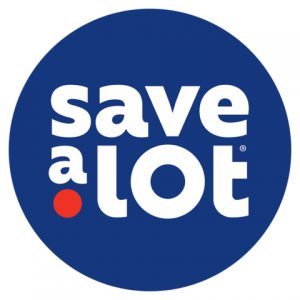 H-E-B has been named the top U.S. Grocery Retailer in the seventh annual dunnhumby Retailer Preference Index, a comprehensive, nationwide study that examines the approximately $1 trillion U.S. grocery market. H-E-B is the first grocery retailer to be recognized three times as number one in the RPI ranking surpassing Amazon and Trader Joe’s who both ranked as top grocer twice. Amazon (2) and Costco (3) round out the top three grocers in the U.S. for a second year in a row.
H-E-B has been named the top U.S. Grocery Retailer in the seventh annual dunnhumby Retailer Preference Index, a comprehensive, nationwide study that examines the approximately $1 trillion U.S. grocery market. H-E-B is the first grocery retailer to be recognized three times as number one in the RPI ranking surpassing Amazon and Trader Joe’s who both ranked as top grocer twice. Amazon (2) and Costco (3) round out the top three grocers in the U.S. for a second year in a row.
The seven other retailers in the top 10 are: 4) Market Basket, 5) Sam’s Club, 6) Wegman’s, 7) Aldi, 8) Shoprite, 9) Walmart Neighborhood Market, 10) Walmart. Retailers in the top quartile of the RPI have a five year CAGR of 8.5 percent compared to 3.6 percent for retailers in the fourth quartile. In addition, 59 percent of customers of first quartile retailers have a strong emotional connection with retailers compared to 41 percent of customers of fourth quartile retailers.
“Knowing your customer and your competitive positioning regarding customer needs will be critical for retailers to scratch out any organic growth in 2024. Customers are re-evaluating their opinions of retailers more than ever and that will only intensify in the coming months due to the economic headwinds facing consumers,” said Matt O’Grady, dunnhumby’s President of the Americas. “In this year’s RPI, we illuminate how the consumer views the grocery market, and how different retailers are meeting the general population’s needs as well as the needs of different consumer segments.”
The dunnhumby RPI is the only approach to ranking grocers that combines financial results with customer perception. It includes the largest 65 retailers in the industry that sell everyday food and non-food household items. The financial data used in the dunnhumby model comes from Edge Ascential, and the customer perception data is sourced from dunnhumby’s annual survey of more than 10,000 American grocery shoppers. The five drivers of the customer value proposition are in order: 1) Price, Promotions, and Rewards, 2) Quality, 3) Digital, 4) Operations, and 5) Speed and Convenience.
Key findings from the study:
- dunnhumby forecasts the U.S. grocery market sales growth will be 0.5 percent to 1.5 percent in 2024– one of only three times in the last 30 years with growth below 1 percent and the slowest growth rate since the Great Recession of 2009. This slowdown is due to the economic headwinds still facing consumers – slowing disposable income growth, lower savings rate, higher debt, cost to service consumer debt, and the drying up of pandemic related savings buffers.
- Competitive intensity is at an all-time high in this fourth year of economic uncertainty. Customers are re-evaluating retailer value propositions more than ever, ensuring those value propositions align with their needs. The average retailer ranking in a value proposition changed by six spots, higher than any previous year.
- Savings through low base prices and highly personalized promotions and rewards remains the strongest driver of better long-term retailer performance, followed by maintaining high quality assortment. Market Basket (1), Winco (2), and Aldi (3) are the top three in the RPI’s “Price, Promotions, Rewards” pillar, due to the strongest combination of mass and personalized pricing levers. Wegman’s (1), Trader Joe’s (2), and The Fresh Market (3) are the top three in the “Quality” pillar. Wegman’s has held the top position in the “Quality” pillar every year of the RPI.
- H-E-B topped the RPI ranking because they have the strongest customer value proposition for the long-term. This is due to their superior ability to deliver a combination of better savings and better experience/assortment, supported by time savings through superior digital capabilities.
- Amazon has been in the top three every year of the RPI and has ranked first twice. They are doing this with a segmented approach, rather than building a customer value proposition that equally attracts different segments of the general population.
- Two Kroger banners (Kroger and Fry’s) made it to the top quartile for the first time in the history of the RPI. The Kroger banners’ move into the first quartile can be explained by improvements they drove in overall price perception in 2023, a year when saving customers money mattered more than any year in this study, prior to 2022. Two other Kroger banners (Fred Meyer and King Soopers) were also among the biggest climbers in this year’s RPI ranking. These latter two sit in the second quartile, just outside of the first quartile.
The full dunnhumby Retailer Preference Index report can be downloaded.
Retailers included in the RPI that are interested in receiving their individual banner profiles can speak with their dunnhumby account executive, or contact dunnhumby at: https://www.dunnhumby.com/contact/. dunnhumby will also be attending and exhibiting at NRF 2024 in booth #1553.
For more news of interest to the grocery industry, subscribe to Gourmet News.









